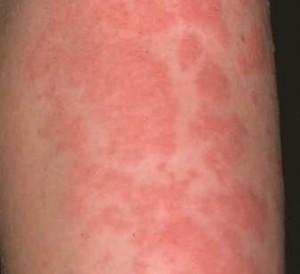Do you develop itchy, raised hives after being bitten by a flea? The sight of hives forming on your skin may startle you, especially if you aren’t used to seeing them. Combined with the intense burning and itching sensation, some people may seek immediate medical attention, assuming the flea bite has caused some severe reaction that requires treatment.
Why Flea Bites Cause Hives
It’s important to note that flea bites affect people in different ways. One person may show practically no symptoms or signs at all, whereas another person may break on in severe rashes and hives. Fleas aren’t venomous, but they do have protein-rich saliva which they inject into their host when feeding. As this saliva is injected, the host’s immune system views it as a foreign invader, at which point it responds by causing inflammation, itching, redness, pain, and the formation of hives.
Most people will only experience itching, swelling and mild redness as a result of flea bites. However, people with Flea Allergy Dermatitis (FAD) may experience more severe symptoms, such as the formation of hives. Again, this is due to the body’s reaction to the flea’s saliva. The immune system assumes flea saliva is some type of foreign invader, so it responds by attacking the surrounding area.
Note: you should seek immediate medical attention if you notice the hives spreading to your face or neck. Although rare, this may create life-threatening complications in which the airway is obstructed and unable to operate.
How To Treat Flea Bite Hives
There are several different ways to relieve the pain, inflammation and redness associated with flea bite hives, one of which is to apply a 1% hydrocortisone cream to the affected area. This medicine has a special steroid that offers relief of symptoms associated with flea bites, including hives. Apply a small amount directly to the bite and avoid touching it. Within minutes, you should notice the symptoms subsiding.
Another simple way to treat hives caused by flea bites is to apply an ice cube directly to the bite. The cool sensation will numb the pain while slowing down the flow of blood. Just remember to keep the ice cube moving so it won’t burn your skin. Holding an ice cube directly to your skin for long periods of time can lead to frostbite — a condition where the skin cells and tissue die as a result of being frozen.

